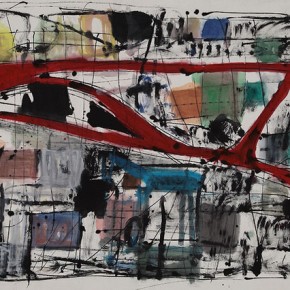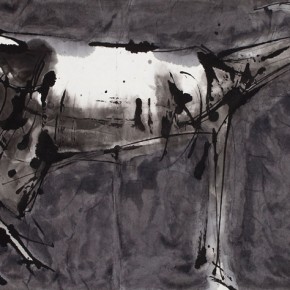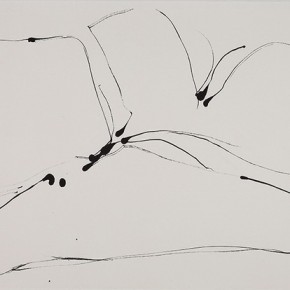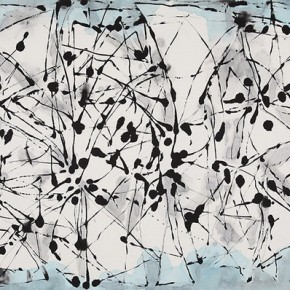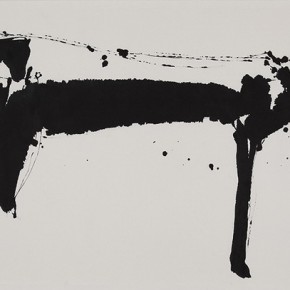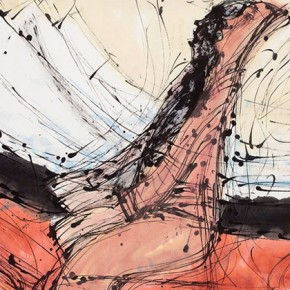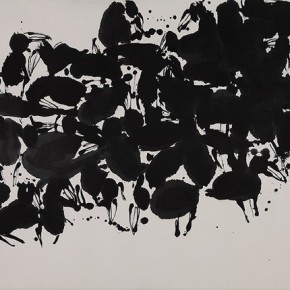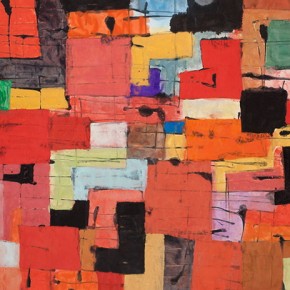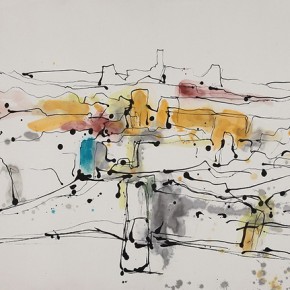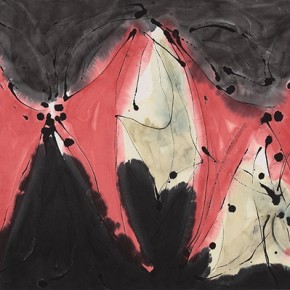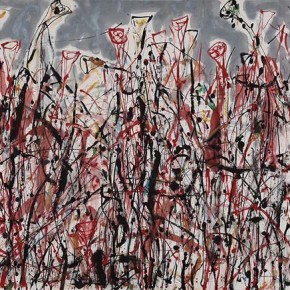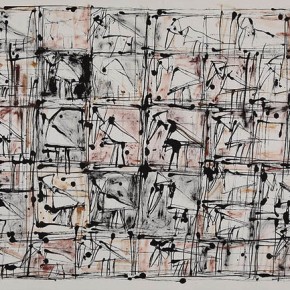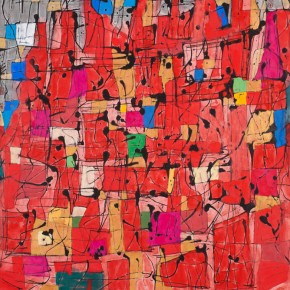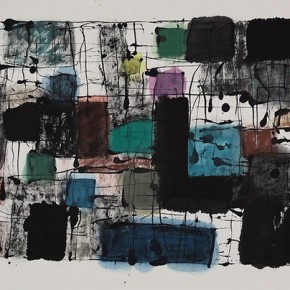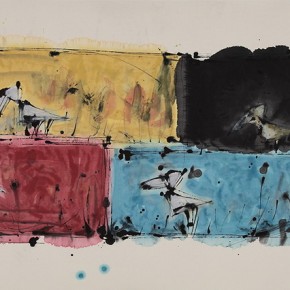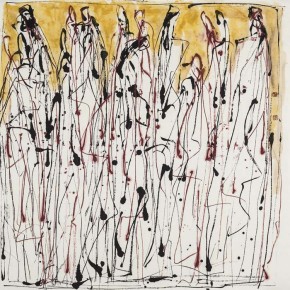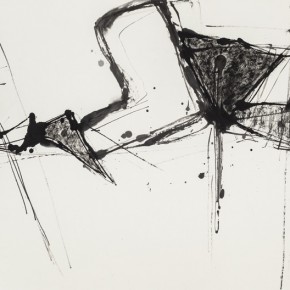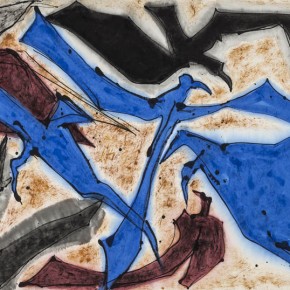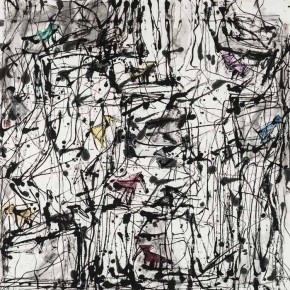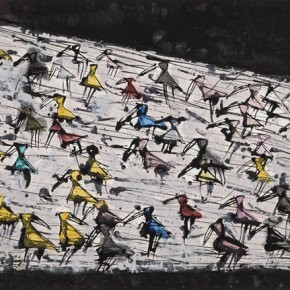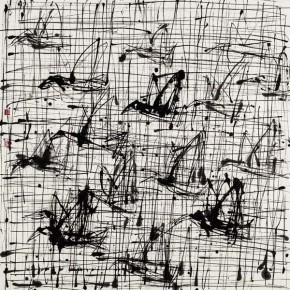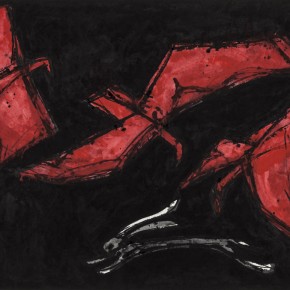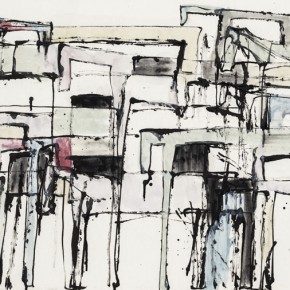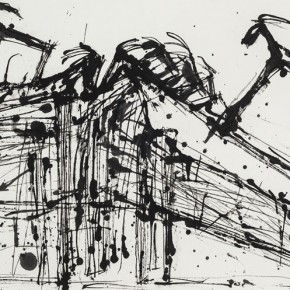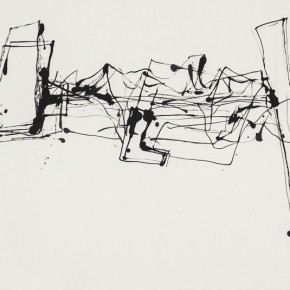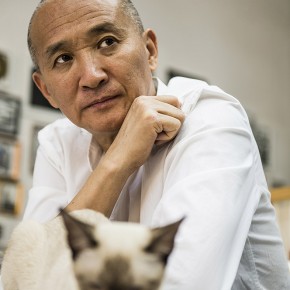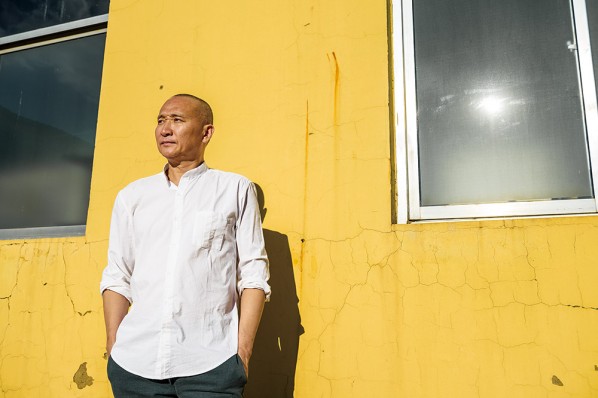
“Contrasting Worlds – The Ink Art of Qiao Xiaoguang” opened at the Can Art Center in 798 Art Zone in Beijing at 15: 00 on October 12, 2013. The exhibition features his creations including more than 40 works by Qiao in recent years, which reveal the explorative state in the creation of ink and wash and the increasingly clear direction of the art of the ink and wash by Qiao Xiaoguang, his art practice provides the diversity of the ink art with a new perspective and fresh unique artistic appearance.
As the theme of the exhibition, “Contrasting Worlds” is of a strong metaphor and polysemy. As the traditional philosophical concept of local culture, “contrast” not only contains the cultural origin of the ontology of ink and wash, but also a metaphor of the times where cultures and social creatures are mixed together in the current transition of Chinese civilization. The contrasting essence is chaos, while the contrasting worlds mutually reinforce and neutralize each other, and also produce a complementary and symbiotic world.
Qiao Xiaoguang has always adhered to the initial idea of looking for modernity on the basis of folk art, since the appearance of the ’85 New Wave of fine art, at the same time, he sticks to focusing on social life and the openness of cultural absorption. Qiao sets ink and wash in a broader cultural context, and constantly transcends the conventional scale of ink and wash in the ongoing practice, returning to the essence of paper as well as the source of writing and painting, to discover art that is as original as possible. The exhibition reveals not only his expression of the traditional cultural motifs, contemporary life, as well as the expression of individual experience with sensitive things, but also it reveals a broader narrative exploration of the artistic language, with graffiti-style double lines, to perform a multi-media artist through a sensitive rhythm, whose oil painting, paper-cut, ink and wash have become a complementary and symbiotic artistic practice.
On the one hand, the trend of the ink art by Qiao Xiaoguang leads our vision towards Chinese early art tradition, on the other hand, it allows us to see the introduction and integration of a lot of cross-cultural factors, in his artistic creative thinking lots of chaos and contrast is implied. From the early Chinese art archeology to the traditional oral ethical epic; from the reusing and metaphor of lines to natural freedom graffiti; from the color system of Chu art and spiritual graphic space to the old nine palaces diagram of the human, from the ancient complex artistic techniques to Cubism’s way of reconstructing things, Qiao Xiaoguang makes many things cross time and space, to realize an incredible unity in the mixture and imagination of art.
The exhibition continues to November 6, 2013.
About Qiao Xiaoguang
Qiao Xiaoguang graduated from the Department of Arts, Hebei Normal University in 1982, majored in Chinese Painting. During the ’85 New Wave, he and his friends established the “Rice and Sheet/ Miyang Studio”, a Northern young artists group, advocating to explore the modernity of art based on local folk art, integration of ancient Chinese tradition and Western modern art. Qiao is known for his oil painting “Corn Field” series and modern paper-cut series. Qiao was admitted as a master student to the Department of Folk Art, CAFA, in 1988, beginning his perseverant field study and social practice of folk art and intangible cultural heritage.
Qiao Xiaoguang is a special case during the significance of time in the ’85 New Wave, he insisted on the initial idea, finding out his own path in art, among the related art issues and academic studies as well as the possibilities when he tried many media artistic practices based on the local styles, bringing us inspiration.
As the famous art critic Yin Shuangxi said: “Qiao Xiaoguang is a combination of scholar and artist. He is a well-known scholar of humanities, is full of love, actively rescuing, protecting and advocating Chinese folk art and intangible cultural heritage since 1990, as well as playing a main role in applying the World Intangible Cultural Heritage in the United Unions for Chinese folk art such as paper-cuts. In recent years, he was suddenly enlightened, and drew a large number of new works, giving us a kind of new visual experience, from which we could see a contemporary artist based on folk art and modern art, whose roots are still in folk art from China.
Text and Images Courtesy of Qiao Xiaoguang, translated by Chen Peihua and edited by Sue/CAFA ART INFO


